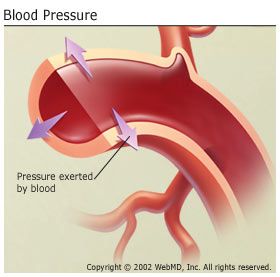A blood pressure reading appears as two numbers. The first and higher of the two is a measure of systolic pressure, or the pressure in the arteries when the heart beats and fills them with blood. The second number measures diastolic pressure, or the pressure in the arteries when the heart rests between beats.
Optimal blood pressure is less than 120/80 (systolic/diastolic). In healthy people, low blood pressure without any symptoms is not usually a concern and does not need to be treated. But low blood pressure can be a sign of an underlying problem -- especially in the elderly -- where it may cause inadequate blood flow to the heart, brain, and other vital organs.

What Causes Low Blood Pressure?
The cause of low blood pressure isn't always clear. It may be associated with the following:- Pregnancy
- Hormonal problems such as an underactive thyroid (hypothyroidism), diabetes, or low blood sugar (hypoglycemia)
- Some over-the-counter medications
- Some prescription medicines such as for high blood pressure, depression or Parkinson’s disease
- Heart failure
- Heart arrhythmias (abnormal heart rhythms)
- Widening, or dilation, of the blood vessels
- Heat exhaustion or heat stroke
- Liver disease
Sudden drops in blood pressure can be life-threatening. Causes of this type of hypotension include:
- Loss of blood from bleeding
- Low body temperature
- High body temperature
- Heart muscle disease causing heart failure
- Sepsis, a severe blood infection
- Severe dehydration from vomiting, diarrhea, or fever
- A reaction to medication or alcohol
- A severe allergic reaction, called anaphylaxis
No comments:
Post a Comment